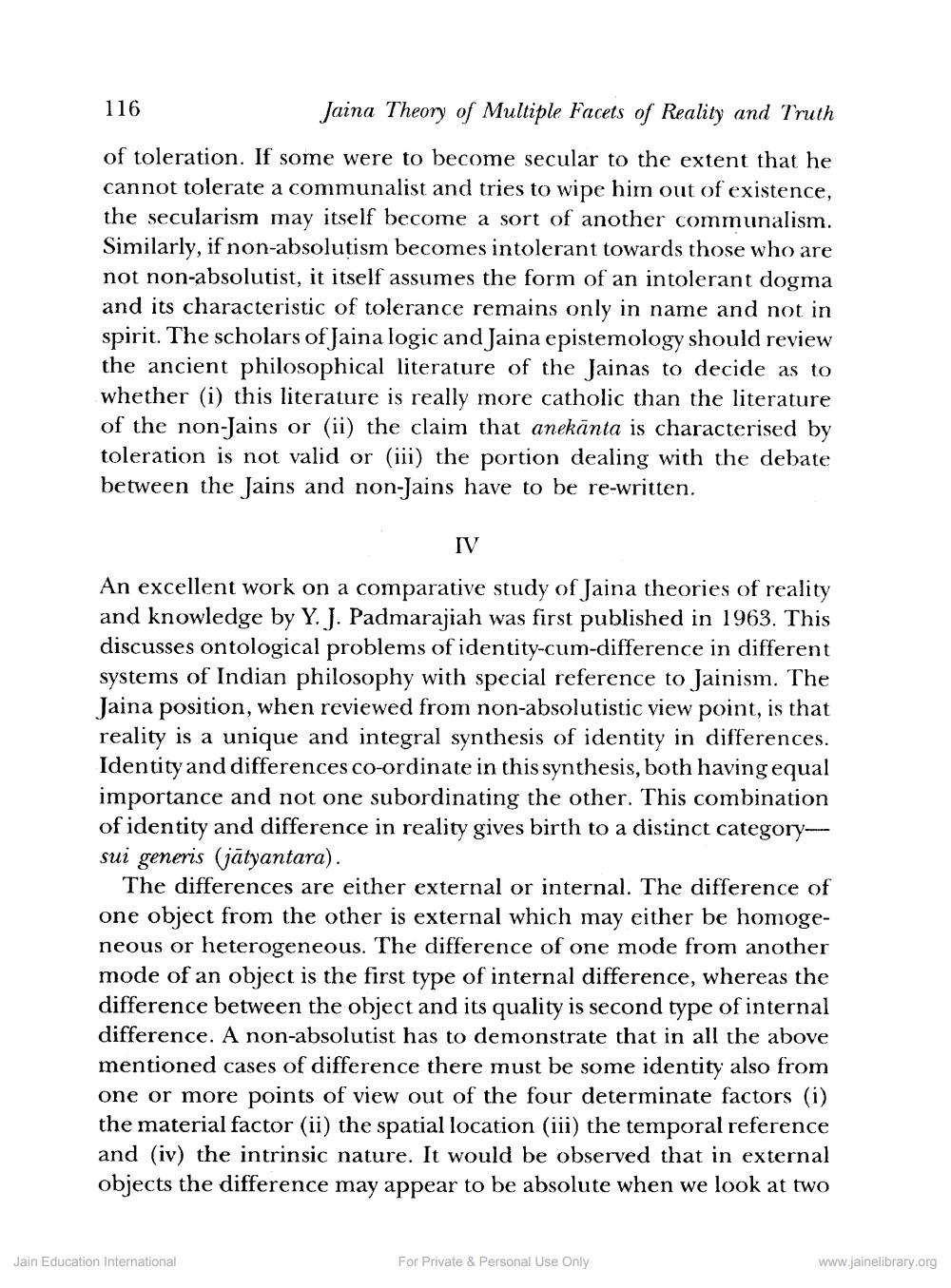________________
116
Jaina Theory of Multiple Facets of Reality and Truth
of toleration. If some were to become secular to the extent that he cannot tolerate a communalist and tries to wipe him out of existence, the secularism may itself become a sort of another communalism. Similarly, if non-absolutism becomes intolerant towards those who are not non-absolutist, it itself assumes the form of an intolerant dogma and its characteristic of tolerance remains only in name and not in spirit. The scholars of Jaina logic and Jaina epistemology should review the ancient philosophical literature of the Jainas to decide as to whether (i) this literature is really more catholic than the literature of the non-Jains or (ii) the claim that anekānta is characterised by toleration is not valid or (iii) the portion dealing with the debate between the Jains and non-Jains have to be re-written.
IV An excellent work on a comparative study of Jaina theories of reality and knowledge by Y. J. Padmarajiah was first published in 1963. This discusses ontological problems of identity-cum-difference in different systems of Indian philosophy with special reference to Jainism. The Jaina position, when reviewed from non-absolutistic view point, is that reality is a unique and integral synthesis of identity in differences. Identity and differences co-ordinate in this synthesis, both having equal importance and not one subordinating the other. This combination of identity and difference in reality gives birth to a distinct categorysui generis (jātyantara).
The differences are either external or internal. The difference of one object from the other is external which may either be homogeneous or heterogeneous. The difference of one mode from another mode of an object is the first type of internal difference, whereas the difference between the object and its quality is second type of internal difference. A non-absolutist has to demonstrate that in all the above mentioned cases of difference there must be some identity also from one or more points of view out of the four determinate factors (i) the material factor (ii) the spatial location (iii) the temporal reference and (iv) the intrinsic nature. It would be observed that in external objects the difference may appear to be absolute when we look at two
Jain Education International
For Private & Personal Use Only
www.jainelibrary.org




